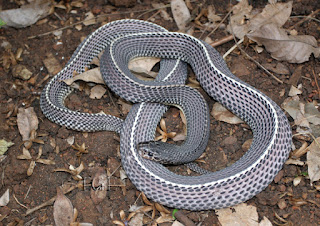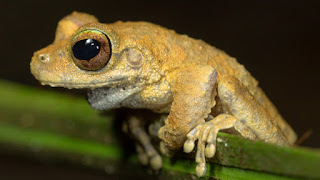Shedd Aquarium welcomes green anaconda to Amazon exhibit - Chicago Tribune
The Shedd Aquarium's "Amazon Rising" exhibit offers a glimpse into the many animal and plant species native to the faraway rainforest, including the emerald tree boa, white-faced whistling duck, dwarf caiman and wattled jaçana.
And now, the exhibit has welcomed a new slithering creature, one of the world's largest snakes — a green anaconda.
The female snake, who is believed to be around 5 years old, was donated by a member of the Chicago Herpetological Society when the exhibit was "in need" of an anaconda, according to "Amazon Rising" manager Michael Yuratovac.
"I think she's beautiful. She's a very large snake. She's 10 feet 7 inches right now and she could get up to 20 feet. So it's impressive — people don't normally get to see a snake that size in person," Yuratovac said.
:quality(70)/cloudfront-us-east-1.images.arcpublishing.com/tronc/EQWNFF7AUFENFKT6VXCDBTOXSE.jpg)
The new anaconda drew many curious visitors, including several children who found themselves leaning against the glass that separated them from the snake, staring in awe as it slithered through the water and across several branches.
Nathan Gonzalez, 16, visited the Shedd Aquarium on Tuesday and was especially excited to see the anaconda, which he had learned about in school: "It's just amazing to see animals that I've never seen before, especially the anaconda."
The snake's native habitat is in South America and this species is known for its predator-like presence. As a constrictor, the anaconda can detach its jaw to swallow large prey whole, its mudlike coloring helping it blend into shallow waters and greenery. The animals are known to be capable of living in and out of the water, and are unique for having their eyes and nose on the tops of their heads, which helps them see and smell while swimming.
As the Shedd's new snake is getting used to its new environment, aquarium employees are working to make the anaconda less sensitive and responsive to touch. Yuratovac said this process involves touching her back for a moment or two and hoping she doesn't respond. By desensitizing the anaconda to touch, Yuratovac and his staff can ensure she does not put herself or staff in harm's way during feeding or veterinarian procedures.
"We have to be very cautious that we're not passing in front of her when she's in the water because she does look like she's just sitting there and then one second she could be striking up at you because she thinks you're food," he said. "We are very cautious and we're trying to feed her in a way where … she'll know that food comes from only this one spot."
[ How old was the Shedd's dearly departed Granddad? According to new research, very old indeed ]
Many aquarium-goers viewing the anaconda were surprised by its size and reflected on broader concerns for critical ecosystems around the world.
A news release from the aquarium noted that humans are the biggest threat to the snakes as they hunt the animals for their skin or out of fear.
Indiana resident Tara Debish was visiting the Shedd with her children as part of a family trip to Chicago. She noted that her son was "absolutely astounded" by the large green anaconda.
"It opens my eyes to what kind of impact we have on these animals and how we need to work to protect them," she said.
Daniyah Ahmed, another mom visiting Chicago with her family from Houston said her kids were "pretty excited" to learn about different aquatic species and ecosystems.
"You have a better, greater knowledge of seeing how many animals can be impacted by whatever we're doing, so this exhibit is pretty good because you probably think of fish in a small range, but when you come here you see a lot of species so it gives you a broader view," she said.
dgill@chicagotribune.com



Comments
Post a Comment